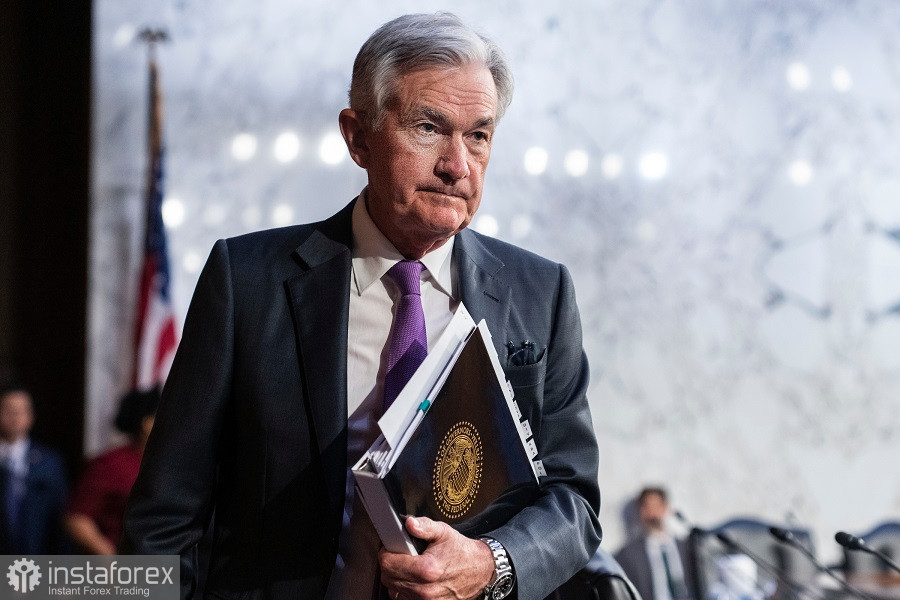At the end of the US session on Wednesday, the US Federal Reserve will announce the results of its July meeting. The next US central bank meeting will take place in the fall (September), so the Fed's interest rate decision will impact dollar pairs at least until the end of summer.
However, not only are the formal outcomes of the July meeting known in advance, the market has already priced in a 25 bps rate hike. According to the CME FedWatch tool, there is a 98.9% chance the new fed funds range after Wednesday's release will be 5.25% to 5.50%. Therefore, traders will focus on the future – the dollar's will be determined by the prospects of monetary tightening. This means that the market will concentrate on the accompanying statement and Fed Chair Jerome Powell's rhetoric during his press conference. Any hints of succeeding rate hikes will play in favor of the greenback. And vice versa, the absence of such hints will exert strong pressure on the US dollar.

The main intrigue of the July meeting lies in how the Fed Committee members have evaluated the recent inflation reports, which have come out in the "red." First and foremost, this concerns the Consumer Price Index (CPI). The year-on-year CPI decreased to 3.0%, while in May, it was at 4.0%. The core Consumer Price Index, which excludes food and energy prices, showed a downtrend in June, coming in at 4.8% (against a forecast of 5.0%).
Another inflation indicator, the Producer Price Index (PPI), also came out weaker than expected. The overall PPI index in the year-on-year calculation plummeted to 0.1% compared to a forecasted decline of 0.4% – this is the slowest pace of growth since August 2020. The core PPI index showed a similar trend, with a decline to 2.4% in June (the lowest value since January 2021) against a forecasted decline to 2.6%. This indicator has been declining for 15 consecutive months.
The Import Price Index completed the picture, hitting a two-year low at 6.1% in the year-on-year calculation.
The labor market – a reliable ally of the greenback – did not please the dollar bulls with its groundbreaking results this time. The June Nonfarm Payrolls report had mixed results. The US unemployment rate decreased to 3.6% after a slight increase to 3.7% in May, while the non-farm payroll employment figure came out in the "red" at 209,000 against a forecast of 224,000. Another component of the report, the number of employees in the private sector, was also in the "red." In June, this figure increased by 149,000 against a forecasted growth of 200,000.
While these June results allow for a quarter point rate hike, they also provide room for not rushing to announce further steps in this direction. Since the July decision has already been priced in by the market, the absence of clear hints at continuing the tightening cycle will exert significant pressure on the US dollar.
The future prospects of monetary tightening are subject to debate. Nevertheless, many analysts doubt that the Fed will maintain an aggressive stance at the July meeting. For example, the majority of economists surveyed by Reuters (87 out of 106) believe that the Fed will finally signal the end of the tightening cycle.
Currency strategists at major banks (at least many of them) are voicing similar forecasts. In particular, analysts at Commerzbank are confident that the July rate hike will be the last one this year. The same position was voiced by UBS Group analysts, indicating that there are encouraging signs that inflation in the services sector is decreasing (this particular component of the inflation report had raised significant concerns for Powell and some of his colleagues). According to UBS analysts, the Fed will not announce victory over inflation yet, but nevertheless, the central bank's rhetoric will be conclusive without a direct announcement of further rate hikes.

Certainly, one cannot rule out the possibility of an alternative scenario, a conditionally hawkish one at that, in which the US central bank will allow (or even announce) further steps in tightening monetary policy to further curtail inflationary pressures. It's worth noting that some Fed officials have maintained a hawkish stance despite the "red tint" of inflation reports. For instance, Mary Daly, the head of the San Francisco Fed, warned that it is still too early to declare victory over inflation. Another Fed official, Christopher Waller, also expressed support for further rate hikes, citing the stability of the labor market and strong overall indicators of the US economy. Following Daly, he also said that it is still too early to declare victory over inflation, citing last year's events when inflation initially slowed down but eventually regained momentum.
This means that there are several possible scenarios. More precisely, two scenarios. According to the base scenario, the Fed raises the interest rate but uses cautious language in the accompanying statement, thereby hinting that the July rate hike will be the last in the current cycle.
According to the second scenario, the Fed also raises the interest rate but uses more hawkish language in the final communique.
In essence, the dollar's fate will depend on the emphasis placed (the tone of the statement, verbal signals from Powell). If traders, for the most part, see prospects for another (and more) rate hike by the end of the year, the dollar will benefit from the July meeting. All other scenarios will play against the US dollar.
 English
English 
 Русский
Русский Bahasa Indonesia
Bahasa Indonesia Bahasa Malay
Bahasa Malay ไทย
ไทย Español
Español Deutsch
Deutsch Български
Български Français
Français Tiếng Việt
Tiếng Việt 中文
中文 বাংলা
বাংলা हिन्दी
हिन्दी Čeština
Čeština Українська
Українська Română
Română

